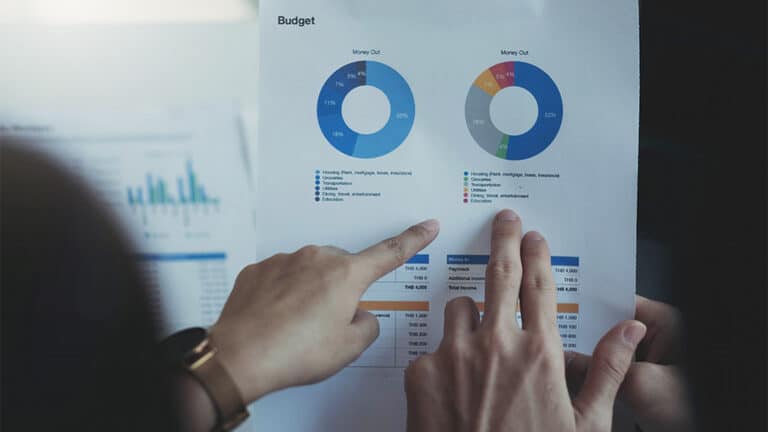How to Optimize Your WooCommerce Store for Speed and Performance
In the fast-paced world of eCommerce, speed and performance are critical for success. A slow-loading website can drive potential customers away, negatively impact search engine rankings, and ultimately harm your bottom line. For WooCommerce stores, the challenge of maintaining optimal speed and performance can be even greater due to the complex functionalities that are often needed for product listings, inventory management, and payment gateways.
If your WooCommerce store is sluggish or underperforming, it’s time to prioritize optimization. In this post, we’ll explore actionable steps you can take to enhance the speed and performance of your WooCommerce store. By following these best practices, you’ll ensure that your store is not only fast but also capable of handling higher traffic, leading to increased conversions and customer satisfaction.
1. Choose a Reliable Hosting Provider
The foundation of a fast WooCommerce store starts with the right hosting provider. Many store owners opt for shared hosting because of its low cost, but shared hosting can significantly impact your site’s speed and performance, especially as your store grows.
Why Hosting Matters: Shared hosting environments mean that your website shares server resources with many other websites. This can cause slow response times, especially during peak traffic hours, because the server’s resources are spread thin across multiple sites. On the other hand, a reliable hosting provider ensures that your store has the resources it needs to perform well, regardless of traffic spikes.
Recommendations:
- Managed WooCommerce Hosting: Opt for a hosting provider that specializes in WooCommerce. Managed hosting services are designed to cater specifically to WooCommerce stores, offering built-in optimizations like caching, security, and server-level enhancements.
- Virtual Private Server (VPS) or Dedicated Hosting: As your store grows, consider upgrading to a VPS or dedicated server to ensure that your store has dedicated resources, which leads to faster load times and better performance.
Some trusted WooCommerce hosting providers include SiteGround, Kinsta, and WP Engine. These providers offer high-performance hosting environments optimized for WooCommerce stores.
2. Optimize and Compress Images
Images are an integral part of any eCommerce store, but they can also be one of the biggest culprits behind slow load times. Unoptimized images that are large in file size can significantly impact your website’s performance, causing pages to load slowly and leading to higher bounce rates.
The Impact of Large Images: High-resolution product images are essential for showcasing your products, but these images can take a long time to load if they aren’t optimized. Each time a customer visits your website, their browser has to download these large image files, which slows down the overall page speed.
How to Optimize Images:
- Compression Tools: Use image compression tools to reduce the file size of your images without sacrificing quality. Tools like Smush, TinyPNG, and Imagify can automatically compress images when they are uploaded to your site.
- Image Format: Choose the right image format for different types of images. Use JPEG for larger images and PNG for smaller, detailed images like logos. You can also consider using WebP, a modern image format that provides superior compression without losing quality.
- Lazy Loading: Implement lazy loading to ensure that images are only loaded when they are needed. This can significantly reduce the initial page load time, especially on image-heavy product pages.
By optimizing and compressing your images, you can improve load times and create a smoother user experience for your customers.
3. Use a Content Delivery Network (CDN)
A Content Delivery Network (CDN) is a network of servers located in different geographic locations that work together to deliver content to users more quickly. By distributing your website’s assets (like images, CSS, and JavaScript) across multiple servers, a CDN ensures that users can access your website from the server closest to their location, reducing latency and improving load times.
Why a CDN is Important: Without a CDN, all your website’s data is hosted on a single server. This can lead to slower load times for visitors who are geographically far from that server. A CDN solves this problem by caching your content on multiple servers worldwide, allowing for faster delivery to users no matter where they are located.
Benefits of Using a CDN:
- Faster Load Times for Global Audiences: A CDN allows your WooCommerce store to load quickly for users in different countries or regions by serving the content from the nearest server.
- Reduced Server Load: By distributing content across multiple servers, a CDN reduces the load on your main server, preventing bottlenecks during high traffic periods.
- Improved Website Security: Many CDNs also offer security features like DDoS protection and Web Application Firewalls (WAFs) to keep your store secure.
Some popular CDN providers for WooCommerce include Cloudflare, KeyCDN, and StackPath. Implementing a CDN is an effective way to ensure that your store loads quickly for users across the globe.
4. Implement Caching Solutions
Caching is one of the most effective ways to improve the speed of your WooCommerce store. When a user visits your website, their browser requests data from the server to display the page. Without caching, this process must be repeated every time a user visits, even if the content hasn’t changed. Caching allows frequently accessed data to be stored temporarily, reducing the need for repeated requests and speeding up page load times.
Types of Caching:
- Browser Caching: This allows a visitor’s browser to store static files (like CSS, JavaScript, and images) locally, so the browser doesn’t need to download them again on subsequent visits.
- Server-Side Caching: Server-side caching stores frequently requested data on the server, reducing the time it takes to retrieve that data for future visits.
- Page Caching: Page caching stores entire pages so they don’t need to be dynamically generated every time a visitor lands on your website.
Recommended Caching Plugins for WooCommerce:
- WP Rocket: WP Rocket is a premium caching plugin that offers a wide range of features, including page caching, browser caching, and database optimization. It’s easy to use and can significantly improve your site’s performance.
- W3 Total Cache: This free plugin offers various caching methods, including page caching, object caching, and database caching. It also integrates with CDNs for even better performance.
- LiteSpeed Cache: If your hosting provider uses LiteSpeed servers, this plugin offers excellent caching features tailored to WooCommerce stores.
By implementing caching solutions, you can reduce server load, improve page speed, and provide a better user experience for your customers.
5. Minify CSS, JavaScript, and HTML
Minification is the process of removing unnecessary characters (like spaces, line breaks, and comments) from your website’s CSS, JavaScript, and HTML files to reduce their size. This reduction in file size allows browsers to load your pages faster because there is less data to download.
Why Minification Matters: The larger your website’s CSS, JavaScript, and HTML files, the longer it takes for a user’s browser to load your pages. By minifying these files, you reduce the amount of data that needs to be processed, leading to faster page load times.
How to Minify Files:
- Autoptimize: This popular plugin helps minify CSS, JavaScript, and HTML files with just a few clicks. It also offers options for deferring scripts and optimizing the loading of critical CSS.
- Fast Velocity Minify: This plugin combines, minifies, and caches your CSS and JavaScript files, reducing the number of HTTP requests your site needs to make.
- WP Rocket: In addition to caching, WP Rocket also offers minification options for CSS, JavaScript, and HTML, making it a comprehensive performance optimization tool.
Minifying your site’s code is a simple yet effective way to improve page speed and performance.
6. Enable Lazy Loading for Images
Lazy loading is a technique that allows images and other media to load only when they are needed, rather than loading them all at once when a user lands on a page. This can greatly reduce the initial page load time, especially for pages with many images, such as product listings or galleries.
How Lazy Loading Works: When a user scrolls down a page, images that are below the fold (out of view) are not loaded until the user reaches that part of the page. This reduces the number of requests made to the server when the page first loads, improving performance.
Benefits of Lazy Loading:
- Improved Initial Load Time: By deferring the loading of images, you can reduce the amount of data that needs to be loaded initially, which speeds up the time it takes for the page to become interactive.
- Reduced Bandwidth Usage: Lazy loading helps reduce the amount of data transferred between the server and the user’s browser, which is especially useful for users on mobile networks.
WooCommerce stores can benefit from lazy loading by ensuring that image-heavy pages (like category pages or product galleries) load quickly, even with a large number of images.
7. Optimize Your WooCommerce Database
Over time, your WooCommerce database can become cluttered with unnecessary data, such as old orders, revisions, and transients. This can slow down your website by increasing the time it takes to query the database and retrieve information. Regularly cleaning and optimizing your database can help improve your store’s performance.
Why Database Optimization is Important: As your WooCommerce store grows, the database stores more and more information, including customer data, product information, and order histories. Without regular optimization, this data can bloat your database, leading to slower performance and longer query times.
How to Optimize Your WooCommerce Database:
- WP-Optimize: This plugin is specifically designed to clean and optimize WordPress and WooCommerce databases. It can remove unnecessary data like post revisions, expired transients, and spam comments, while also optimizing database tables.
- Manual Optimization: For more advanced users, you can manually clean your WooCommerce database using SQL queries to remove old or unnecessary data.
By optimizing your WooCommerce database regularly, you can ensure that your store remains fast and efficient.
8. Reduce the Number of Active Plugins
While WooCommerce’s extensive library of plugins is one of its strengths, too many active plugins can slow down your website and create conflicts. Each plugin adds extra code to your site, which can lead to longer load times and increased server resource usage.
How Plugins Affect Performance: Every time a visitor loads your website, the server must execute the code from each active plugin. If you have too many plugins installed, this can slow down the server’s response time and negatively impact performance.
How to Manage Plugins:
- Deactivate Unnecessary Plugins: Regularly audit your plugins and deactivate or delete those that you no longer need. Focus on keeping only the essential plugins that are critical to your store’s functionality.
- Consolidate Functionality: If you’re using multiple plugins that offer similar functionality, consider consolidating them into a single, more comprehensive plugin. For example, instead of using separate plugins for caching, image optimization, and database cleanup, you can use an all-in-one plugin like WP Rocket.
Reducing the number of active plugins can help streamline your WooCommerce store and improve its overall performance.
9. Conclusion: How WooCommerce Developers Can Help with Optimization
Optimizing your WooCommerce store for speed and performance is essential for providing a seamless shopping experience and improving conversion rates. By choosing the right hosting provider, compressing images, using a CDN, enabling caching, and minimizing code, you can significantly enhance your store’s performance.For more advanced optimization needs, partnering with WooCommerce developers can help take your store to the next level. Experienced WooCommerce developers can implement custom solutions tailored to your business, ensuring that your store runs efficiently, even during high-traffic periods.







